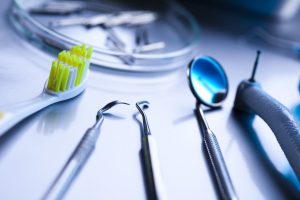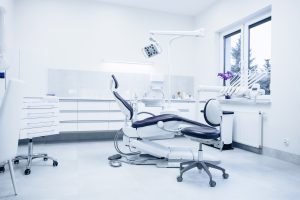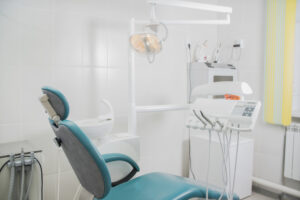The dental attorneys at Nardone Limited in Columbus, Ohio often assist dental clients with partnership formations. As discussed broadly in our previous article entitled Laying the Legal Foundation for a Successful Dental Practice Partnership, two of the most important legal documents to have in place when forming a dental practice partnership include a partnership agreement and a buy-sell agreement. Over the last several months, we have posted several articles explaining various nuances and issues relating to buy-sell agreements, all of which can be accessed on the Nardone Limited Dental Blog.
The cornerstone to a successful partnership, from a legal standpoint, is the partnership agreement—which is known as an operating agreement if the dental practice is formed as a limited liability company. The partnership agreement governs each owning doctor’s financial rights, responsibilities, duties, and obligations with respect to the operation of the dental practice and regulates the doctors’ relations among themselves. Before entering into a dental partnership, there are numerous business terms that the partners need to agree upon and memorialize in a written partnership agreement. None of those terms are more important than how the doctors will be compensated for the dental services they provide on the practice’s behalf, and how the doctors will share in any net profit earned by the practice. Methods for determining the compensation of owning doctors can vary widely from one dental practice to another. But, as discussed below, there are several compensation structures that are more commonly used in the dental industry.
Nardone Limited Comment: Note that partners in a dental practice formed as a corporation for state law purposes will often enter into a close corporation agreement that governs most of the same terms as a partnership agreement, including each shareholder doctor’s financial rights, responsibilities and duties.
Option One: Tiered Compensation
One common compensation structure for owning doctors includes a tiered percentage of collections, where each owning doctor receives a percentage of his net collections, which increases as the doctor’s collections increase. For instance, each doctor receives 30{c91082aefe0e580fe546c40af534787b48cfd474f8c9ab8dac50bf49a7a1c43a} of his first $150,000 in net collections; 35{c91082aefe0e580fe546c40af534787b48cfd474f8c9ab8dac50bf49a7a1c43a} of his net collections between $150,000 and $250,000; and 40{c91082aefe0e580fe546c40af534787b48cfd474f8c9ab8dac50bf49a7a1c43a} of his collections above $250,000. The Practice’s overall net profit after paying out the tiered compensation to the owning doctors and all other practice expenses—including staff compensation—is then distributed to the owning doctors based on their ownership percentages.
Option Two: Compensation Structure that Benefits Consistently Higher Producers
Another commonly used compensation structure is viewed as more fair to owning doctors who are consistently producing significantly more than their partner(s). Under that structure, the practice first sets aside a small percentage of the practices overall gross collections—e.g., e.g., 15{c91082aefe0e580fe546c40af534787b48cfd474f8c9ab8dac50bf49a7a1c43a} of the practice’s gross collections—and then pays that amount to the owning doctors based on their ownership percentages. After that sum is paid out, all other direct and fixed costs of operating the practice are paid from the practice’s collections. The remaining amount is then paid to each owning doctor based upon the doctor’s relative production, reduced by the doctor’s share of his individual discretionary expenses. The discretionary expenses typically include expenses relating to continuing education, automobile, study clubs, and other personal discretionary expenses tied to the doctor.
For example, take a dental practice with two equal owners, Dr. A and Dr. B. The practice’s gross collections in month 1 are $150,000. First, $22,500 of the practice’s gross collections would be paid out (i.e., 15{c91082aefe0e580fe546c40af534787b48cfd474f8c9ab8dac50bf49a7a1c43a} x $150,000), with $11,250 going to Dr. A, and $11,250 going to Dr. B. In that same month, the practice’s direct and fixed costs of operating the practice were $90,000, leaving $37,500 in net income to be divided between the owning doctors (i.e., $150,000 – $22,500 – $90,000). Dr. A’s collections during the month represented 60{c91082aefe0e580fe546c40af534787b48cfd474f8c9ab8dac50bf49a7a1c43a} of the practice’s overall collections, and he had individual discretionary expenses of $2,000. Dr. B’s collections during the month represented 40{c91082aefe0e580fe546c40af534787b48cfd474f8c9ab8dac50bf49a7a1c43a} of the practice’s overall collections, and she had individual discretionary expenses of $1,000. Thus, Dr. A would be paid an additional $20,500 (i.e., ($37,500 x 0.60) – $2,000), and Dr. B would be paid an additional $14,000 (i.e., ($37,500 x 0.40) – $1,000).
Option 3: Percentage of Net Collections Reduced by Allocated Expenses
Under a third commonly used compensation structure, each doctor is paid a percentage of his net collections that would be common for an experienced dentist (i.e., 35{c91082aefe0e580fe546c40af534787b48cfd474f8c9ab8dac50bf49a7a1c43a}). That number is reduced, however, by certain expenses allocated specifically to that doctor, such as continuing education, medical insurance premiums, professional dues, professional liability insurance, retirement plan matching, and employment taxes. The practice’s remaining net profit is then distributed to the owning doctors in accordance with their ownership percentage.
Before changing a current compensation structure between owning doctors, or before bringing on an associate dentist as a partner, Nardone Limited advises its dental clients to have their accountant run the numbers under each option, based on production numbers from prior years. This will allow the doctors to make an informed decision regarding the compensation structure that best suits their practice.
Nardone Limited Comment: Too many dental practices, and too many accountants for that matter, make decisions regarding taxation of a particular entity, compensation structure, retirement plan contributions, as well as other cash flow decisions, without completing the necessary analysis. It is important to complete the due diligence on the front-end to ensure that the dental practice is making an informed decision. Whether it is the dental practice not wanting to incur the expense of having the analysis done, or the accountant being too busy to complete the analysis, we see too many dental practices making decisions without the necessary information. Do the necessary analysis to make an informed decision.
Contact Nardone Limited
If you are starting a new dental practice with a partner or are buying-in to an existing dental practice, the experienced dental attorneys at Nardone Limited will assist you and your practice to ensure you are setting the proper legal foundation for a successful partnership. If you would like more information regarding your dental practice partnership, contact Nardone Limited.

 Vince Nardone Discusses Employment Contracts with Ohio State Dental Students
Vince Nardone Discusses Employment Contracts with Ohio State Dental Students  Navigating the 2024 Landscape: Strategies and Considerations for Dental Support Organizations (DSOs)
Navigating the 2024 Landscape: Strategies and Considerations for Dental Support Organizations (DSOs)  Sellers of Dental Practices to DSOs need to have a Buyer’s Mentality Requiring Selectivity and a Well-Thought-Out, Decision-Making Process
Sellers of Dental Practices to DSOs need to have a Buyer’s Mentality Requiring Selectivity and a Well-Thought-Out, Decision-Making Process  Increasing Profitability by Minimizing Disruptions within Your Dental Practice
Increasing Profitability by Minimizing Disruptions within Your Dental Practice  As a Dentist, What Are My Obligations Related to Out-of-State Patients and Potential Prescription Drug Abuse?
As a Dentist, What Are My Obligations Related to Out-of-State Patients and Potential Prescription Drug Abuse?